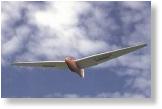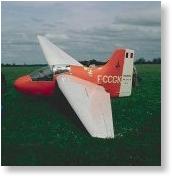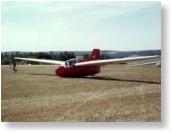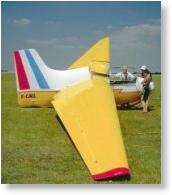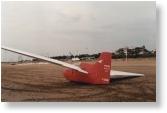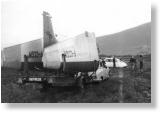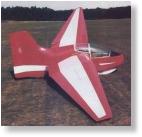| http://www.survol.cjb.net | ||||||||||||||||||||||||||||||||||||||||||||||||||||||||||||||||||
|
||||||||||||||||||||||||||||||||||||||||||||||||||||||||||||||||||
|
|
||||||||||||||||||||||||||||||||||||||||||||||||||||||||||||||||||
|
|
||||||||||||||||||||||||||||||||||||||||||||||||||||||||||||||||||
AV-22
From the development to the birth of the AV-22 was an extremely long time. In 1946, Charles Fauvel had exhibited during an aviation convention in Paris a tandem two-seat glider project, under the title "glider for multiple uses". This project was based on a survey from 1938, that foresaw the possiblity of transforming a two-seat glider to a single-seater able to takeoff by itself using a small front fuselage-mounted engine, and an economical two-seat side-by-side motorglider that would use the same wings but a different fuselage equipped with a heavier, more powerful tractor engine.
The project was not approved and it had been necessary to wait until 1956 for the AV-22 to see the light of day, thanks to funds brought in by the sales of the AV-36 produced by Wassmer. ..The craft had its first flight on April 5, 1956, and was proposed to the official government services immediately, where it was put in competition with the glider Bréguet 902. The following year, the second prototype continued tests. It was equipped with very efficient Schempp-Hirth type air brakes and had a tow hook in the nose of the fuselage, mounted in a high location so as to maintain a better axis in towed flight.
The landing gear was composed of a retractable center wheel and a fixed skid. The wing was removable in two parts, the spars capable of being quickly installed using lever actuated attach pins. The top of the fuselage, as well as the nose, were achieved in fiberglas, while the plexiglas canopy was moulded by Sud-Aviation in Marignane (now known as Matra-Aérospatiale). The AV-22 had a ventilator pickup located in its nose and ventilation was completed by exiting through side windows in the canopy.
Four AV-22’s were constructed, the first made its first flight to Cannes on March 26, 1959. It was delivered to the aeroclub of St Auban on April 14. It is interesting to note that the exhibition at the rally of LeBourget on June 15, 1959 featured the AV-22 performing aerobatics. Towed to 1000 meters, Charles Fauvel demonstrated multiple loops and wingovers, finishing with a low pass at 22O km/h.
The AV-22 had good flight qualities and a very good glide ratio (L/D) compared to other well respected gliders of its time. It demonstrated good air penetration and excellent maneuverability. It was however not the winner chosen by an official group supervising the competition to pick a new glider for aeroclubs. Instead, the "Bijave", an existing glider design produced by the Wassmer Company, was chosen mainly because of two reasons : it was a more classic glider design and the Wassmer company had the ability and capacity to build it in larger numbers.
| Characteristics and performance of the AV-22 | |
| Wing span | 15.20 m |
| Length | 5.07 m |
| Wing area | 21.75 m2 |
| Airfoil | Fauvel F4 17% |
| Aspect ratio | 11.70 |
| Empty weight | 220 kg |
| Stall speed | 58 km/h |
| Max. speed | 170 km/h |
| Best glide ratio | 26:1 |
| Sink rate | 0.83 m/s |
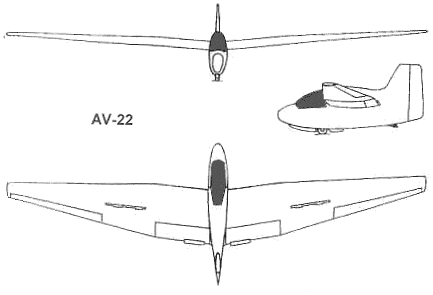
|
